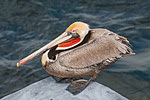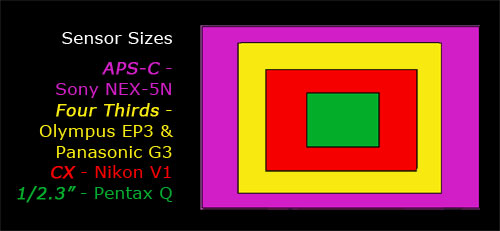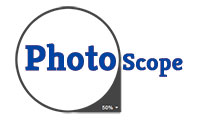Best Mirrorless Camera:
Shootout of Six Top Models
Nikon V1
With the advent of its newly minted 1 Series cameras, represented by the J1 and V1, Nikon has entered the already crowded mirrorless camera (with interchangeable lenses) fray.
In this review, I am focusing on the more expensive V1, which comes with a built-in electronic viewfinder.
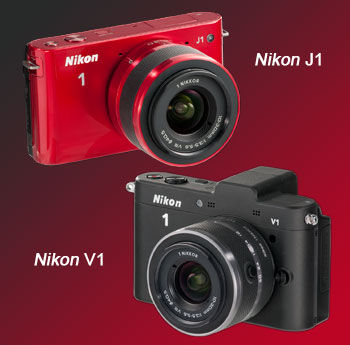
Being a first generation product, I think that Nikon is still trying to establish the V1's niche in the marketplace while balancing two goals.
First, they want to produce a distinctive camera with enough high-end features to compete with the more expensive models in this mirrorless shootout. At the same time, Nikon doesn't want to create a camera that is so amazing that it would dilute the sales of its more expensive DSLR line.
I think they succeeded on both fronts, which does not make for a must-have camera for veteran photographers looking for a lighter substitute for their DSLRs. But the V1 definitely provides a major upgrade for those seeking to advance beyond their point and shoot cameras.
The Good, the Bad and the So-so
If you bear with me for a moment, I want to talk about image sensors because they were the main topic of the chatter about the V1 (and the J1) burning up the Internet, even before the cameras arrived on the scene.
A little background about an image sensor will give you a better context when deciding which camera to buy. The sensor is one of the fundamental components of a digital camera.
Conventional wisdom dictates that the larger a camera's image sensor, the better the image quality, especially when shooting in low light situations. And I usually add the caveat, all things being equal.
Instead of going chest to chest with the larger image sensors in many of the competing models in this mirrorless category, Nikon decided to design both the J1 and V1 around a notably smaller sensor.
The knee-jerk reaction was that there was no way that these "sensor-challenged" Nikons could match the image quality of the more well endowed mirrorless brethren.
After spending a couple of weeks with the Nikon V1, I can attest that its image quality compares very well with mirrorless cameras from Olympus, Panasonic and Sony.
Does it match the output of the Sony NEX-5N, whose sensor is three time larger? No, not on close inspection. But if you are printing 5 x 7 photos or posting JPEGs on Facebook, you may never see the difference. And I think that is even more the case with the Micro Four Thirds cameras from Olympus and Panasonic.
You can judge for yourself how the V1 performs at different ISOs and against other cameras with our PhotoScope Comparison tool. For example, this link is to a side by side, magnified comparison of the Nikon V1 to our favorite, the Sony NEX-5N.
What the V1 does excel at, even better than its competitors, is autofocusing very quickly and accurately. Nothing can be more frustrating than trying to catch that fleeting smile and the damn camera won't focus. Almost every camera is excruciatingly slow to autofocus in low light, but in normal lighting, the V1 shines.
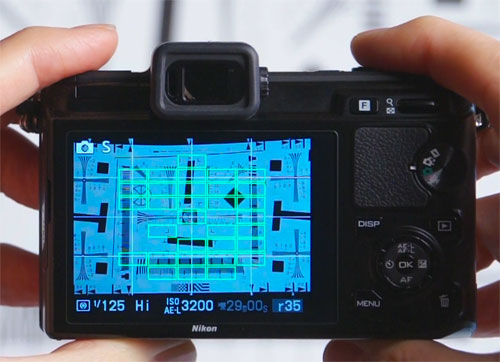
And after wading through menus of endless features on other mirrorless cameras, I was relieved to encounter the V1's leaner and simpler to navigate menu system. For me, the camera is easier to use because I'm not constantly searching for tools that should be no more than one click away.
Now, if the designers had simply left the basic PSAM (Program, Shutter, Aperture, and Manual) choices on the mode wheel, I would be delighted.
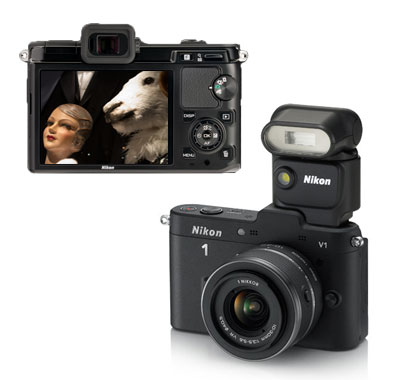
I appreciate the V1's no-nonsense industrial look. First and foremost, I like that Nikon included a first rate dedicated electronic viewfinder. I still prefer to frame my shots up close and personal with a viewfinder and not at arm's length with a 3" LCD screen.
I only wish that the designers had added a built-in flash unit, which would have made the V1 more capable in low light situations. You will need to buy the $150 SB-N5 Speedlight that attaches to the V1's hot shoe.
Three of the lenses that were introduced with the rollout of the 1 Series cover the usual focal length range. (Because of the V1's sensor size, the lenses have a 2.7 conversion factor, which makes the 10mm pancake lens the equivalent of a traditional 27mm wide angle lens.)
Hopefully, Nikon will fill in this lineup with faster prime lenses that will facilitate shooting in low light. On an aesthetic note, this first batch of lenses does not produce that pleasing, soft focus, bokeh that many photographers desire.
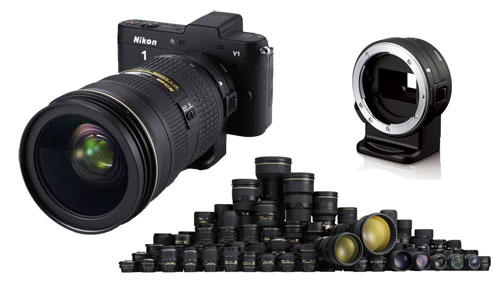
Recently, Nikon released the FT1 Mount Adapter, which can accept many legacy Nikon F-mount lenses. But you can see that with this adapter, a large lens dwarfs the V1 body and you would lose the camera's portability advantage.
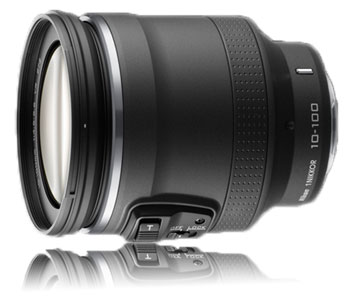
Nikon has also made the 10-100mm zoom lens for those who plan to use the V1 for video work. This lens features a power zoom that is quiet and smooth.
At $750, the power zoom lens is a major commitment for a videographer, but Nikon seems to be serious about the V1's video capabilities. Not only does the camera shoot quality video in either 720p or 1080 HD resolution, you can even record short five second clips at high speeds (but lower resolution) that play back in slow motion.
If you prefer a series of high resolution still images, you can put the V1 into continuous shooting mode and snap off multiple shots (even RAW files) as fast as your SD card can record them.
Or you could experiment with the Smart Photo Selector mode in which you hold down the shutter release and the Nikon produces a choice of five still images that you can pick from.
Also on the thumbwheel, Nikon added a Motion Snapshot mode, which is so quirky I'm not even going to try to explain it. Let's just say next time Nikon should jettison this odd duck from the mode wheel and bring back the basic PSAM choices.
Conclusion
Missteps like Motion Snapshot accentuate that the V1 is a first generation attempt. Hopefully, Nikon will rectify them in the V2. But Nikon also got a lot right with the easy to use V1, including surprisingly good image quality from a small image sensor and top notch autofocusing performance.
For a more in-depth look at the Nikon V1 and its features, watch my Hands-on Video below.
Nikon V1 Hands-on Video
Nikon V1 Photo Gallery
More about the Nikon V1
In This Shootout:
The Shootout
Sony NEX-5N
Pentax K-01
Samsung NX200
Panasonic G3
Panasonic GX1
Olympus E-P3
Nikon V1
Pentax Q
Reader Comments(11 comments)
|
Posted Feb 24, 2013 4:41:24 PM
|
|
By ARTHUR MCVAY |
Post a Comment Alert Moderator |
|
Posted Jan 18, 2013 6:58:23 AM
|
|
By stephen rudolph |
Post a Comment Alert Moderator |
|
Posted Dec 28, 2012 10:45:52 AM
|
|
By Francis Josey |
Post a Comment Alert Moderator |
|
Posted Nov 14, 2012 8:12:41 AM
|
|
By Bill F. |
Post a Comment Alert Moderator |
|
Posted Nov 12, 2012 4:03:10 PM
|
|
By Docrwm |
Post a Comment Alert Moderator |
|
Posted Nov 12, 2012 4:00:54 PM
|
|
By Docrwm |
Post a Comment Alert Moderator |
|
Posted Oct 2, 2012 9:19:44 AM
|
|
By varun |
Post a Comment Alert Moderator |
|
Posted Aug 28, 2012 11:27:28 AM
|
|
By Dick De Jong |
Post a Comment Alert Moderator |
|
Posted Aug 18, 2012 10:15:18 AM
|
|
By Peggy |
Post a Comment Alert Moderator |
|
Posted Aug 16, 2012 11:09:42 AM
|
|
By Chris |
Post a Comment Alert Moderator |
|
Posted Aug 14, 2012 4:42:30 PM
|
|
By Bill Steen |
Post a Comment Alert Moderator |





